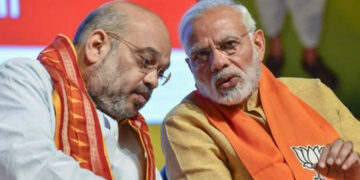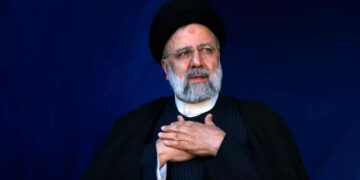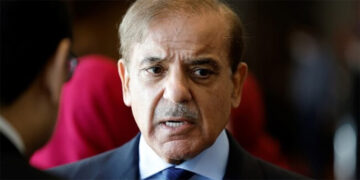 One night in May, about 100 policemen marched along a dirt road in the hills of central India to the village of Gumiyapal, hunting for Maoist insurgents. Jimme Midiyami and her family were eating their evening meal of rice and lentils when they heard the shooting begin. She looked outside and saw a line of men emerging from the forest at the edge of her paddy field. “The police came, we left our food and ran to the next house,” says Midiyami. “We were so scared. We didn’t think we’d be spared from the firing.”They were — but lost everything else. Midiyami, 50, says the police killed two young men suspected of being Maoist rebels, a group widely known as Naxals. Then they burned down her house; inside were rice and grain stored for the lean season, a few pieces of clothing and the family’s life savings of about $70.In the past 12 months, Indian security forces have been trying to flush out the Maoists one by one, village by village. The campaign has been widely criticized for failing to distinguish ordinary villagers from insurgents, and the anger in Gumiyapal is palpable. “Those were not Naxals,” says Midiyami’s husband Guddi Kuta. “They were our men.” Amresh Mishra, at the time police superintendent of Chhattisgarh state’s Dantewada district, where Gumiyapal is situated, insists that the two killed were members of a Maoist militia; he rejects as “100% fake” the allegation that police burned down the house. “Naxals themselves have done this kind of thing to defame the security forces,” he says. “The Naxals play every game.”
One night in May, about 100 policemen marched along a dirt road in the hills of central India to the village of Gumiyapal, hunting for Maoist insurgents. Jimme Midiyami and her family were eating their evening meal of rice and lentils when they heard the shooting begin. She looked outside and saw a line of men emerging from the forest at the edge of her paddy field. “The police came, we left our food and ran to the next house,” says Midiyami. “We were so scared. We didn’t think we’d be spared from the firing.”They were — but lost everything else. Midiyami, 50, says the police killed two young men suspected of being Maoist rebels, a group widely known as Naxals. Then they burned down her house; inside were rice and grain stored for the lean season, a few pieces of clothing and the family’s life savings of about $70.In the past 12 months, Indian security forces have been trying to flush out the Maoists one by one, village by village. The campaign has been widely criticized for failing to distinguish ordinary villagers from insurgents, and the anger in Gumiyapal is palpable. “Those were not Naxals,” says Midiyami’s husband Guddi Kuta. “They were our men.” Amresh Mishra, at the time police superintendent of Chhattisgarh state’s Dantewada district, where Gumiyapal is situated, insists that the two killed were members of a Maoist militia; he rejects as “100% fake” the allegation that police burned down the house. “Naxals themselves have done this kind of thing to defame the security forces,” he says. “The Naxals play every game.”
It is in villages like Gumiyapal that India’s war against the Maoists will be won or lost. India’s security establishment ignored the insurgents for years, expecting that the rebellion would lose steam and die out. It didn’t. Rather, the insurgency has been organizing and expanding over the past decade in remote villages and forests, even as India’s economic boom has enriched and empowered its cities. The Naxals, named for the eastern Indian village of Naxalbari where the movement has its roots, today have a presence in more than a third of India’s 626 districts. Prime Minister Manmohan Singh says they are “the single biggest internal security challenge ever faced by our country.”
The unrest in Kashmir and the threat of jihadists may be just as urgent, but the Maoists have proved to be more resistant to political and military pressure. Since 2006, nearly 4,000 people have died in Maoist violence — 990 so far this year. Besides the human toll, the Naxal rebellion is significant on two counts: its durability and momentum when Maoism most everywhere else, even in China, is extinct — and the incongruity of it thriving in a country that is otherwise seen, at home and abroad, as a nation on the move.Now the Indian government has gotten serious about fighting the Naxals, driven partly by the realization that the insurgents can threaten economic growth without even leaving the forest. India’s economic ambitions are fed by steel and power plants, and the country is intent on extracting coal, iron ore and other minerals from the same forests where the Maoists are strongest. Dantewada, the central theater of this conflict, has some of the richest iron deposits in the country. While India is still attracting billions in foreign capital, the Naxal conflict worries investors. Noted Deutsche Bank in an April 2 report: “Unless the Naxal resistance abates, the high levels of risk associated with doing business in Naxal-infested areas will deter investment and hold back the country’s economic growth trajectory.”
The state of Chhattisgarh has accounted for 30% of Maoist-related deaths in India so far this year. As security forces have tried to encircle the Naxal stronghold there, the rebels have escalated the fight. In April, Maoists ambushed a paramilitary patrol near the village of Chintalnar, killing 76 men, India’s worst-ever single incident of Maoist violence. The morning after the Gumiyapal incident on May 16, Naxals waited, with an improvised explosive device (IED), for a local bus carrying security forces returning from that operation back to their barracks. It was a rare and brutal attack on a civilian target. The IED killed 36 people on the bus — 24 of them civilians. The Maoists have also unleashed a wave of kidnappings, demanding in return the release of their captured comrades and the end of the offensive against them. On Sept. 19, seven Chhattisgarh policemen were abducted by the Naxals; three were killed.
India’s war against the Naxals is a tactical challenge — the difficulty of fighting a guerrilla movement with a conventional force. But it is also an existential struggle. At independence, Jawaharlal Nehru imagined a nation dedicated to Mohandas Gandhi’s ideal “to wipe every tear from every eye.” Today’s leaders have a less sentimental vision. Prime Minister Singh acknowledged India’s “chronic poverty, mass ignorance and disease” in a speech in May, but posited economic development as the answer. “Whatever is needed, I think, we need a high rate of growth,” he said. In this new vision of India, a thriving, liberalized economy will deliver what decades of well-intentioned socialism did not. True, two decades after India’s sweeping economic reforms began, poverty no longer defines India, but the basic needs of 800 million people remain unmet. Maoism survives and thrives on their resentment, says Sudeep Chakravarti, author of Red Sun: Travels in Naxalite Country. “It’s a deep, deep anger over India’s failure to do what it has always promised – Timesofindia











